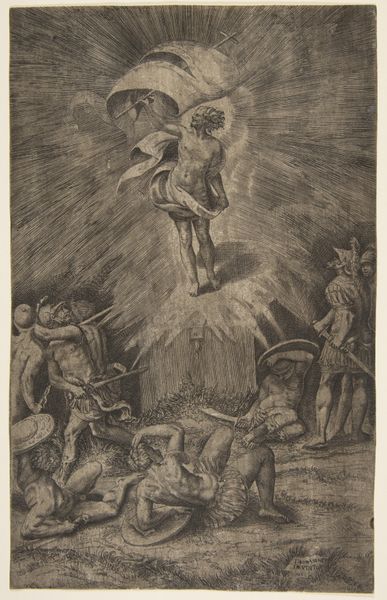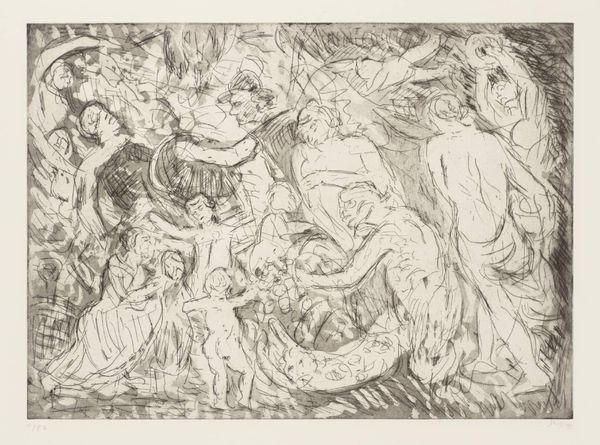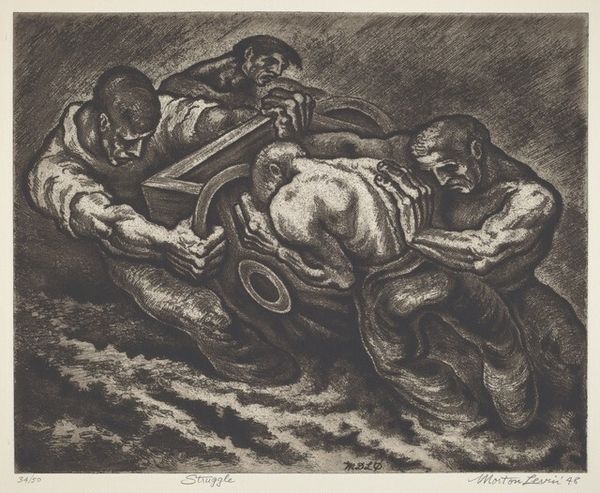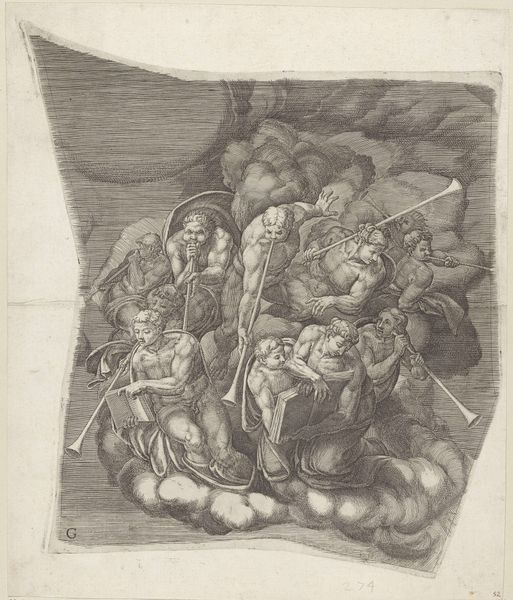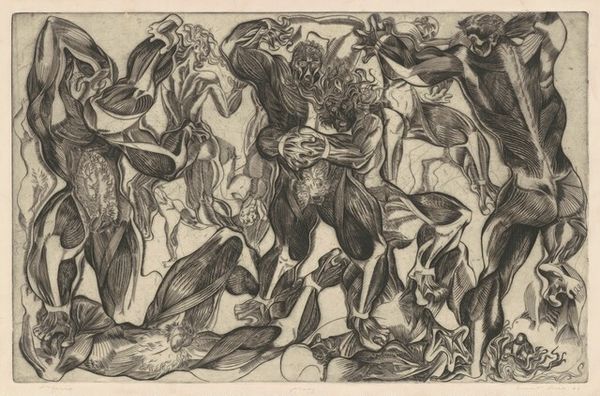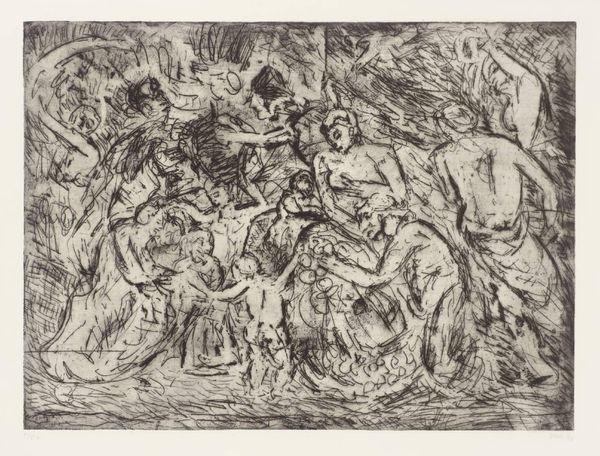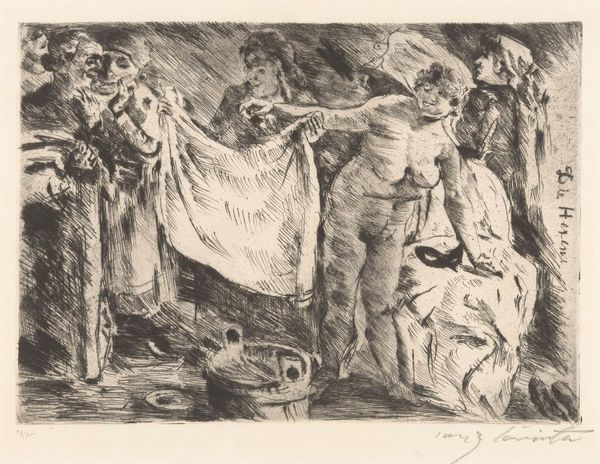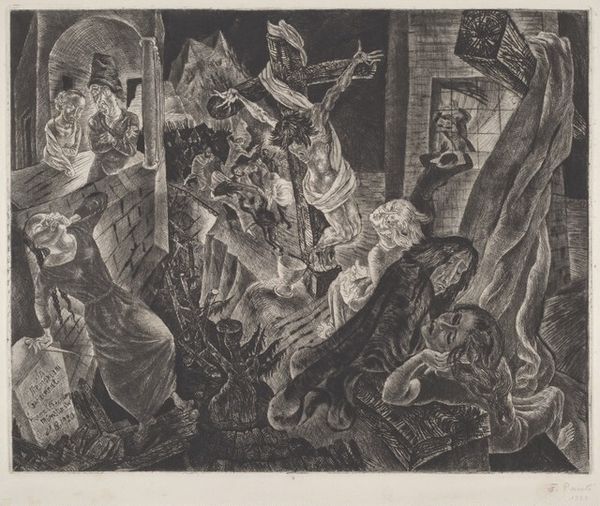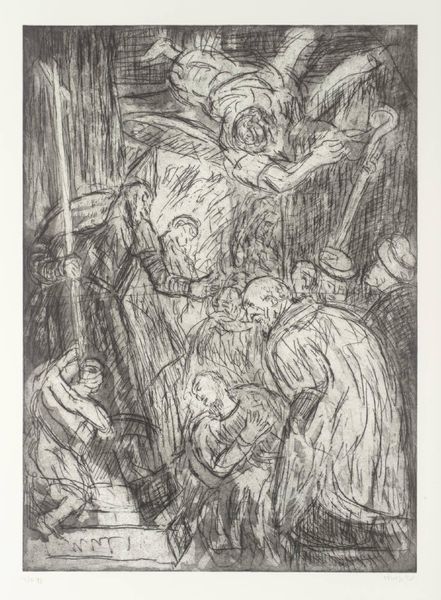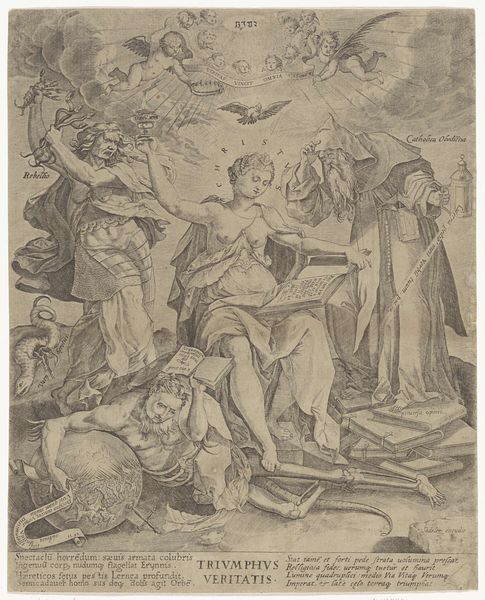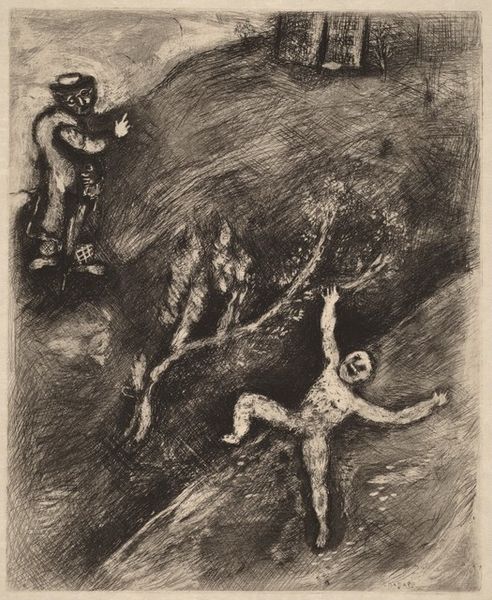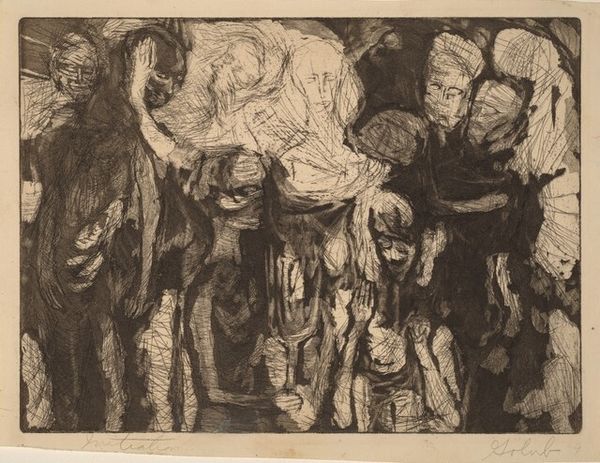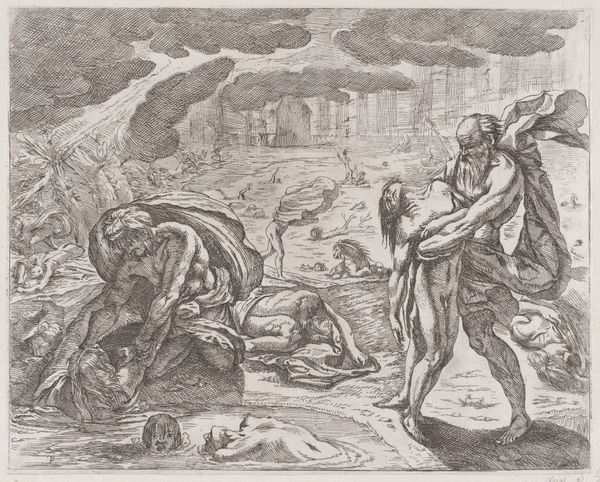
drawing, print, charcoal
#
portrait
#
drawing
#
narrative-art
# print
#
charcoal drawing
#
social-realism
#
pencil drawing
#
portrait drawing
#
charcoal
Dimensions: image: 215 x 177 mm sheet: 335 x 232 mm
Copyright: National Gallery of Art: CC0 1.0
Curator: This print by Morris Topchevsky is titled "In Times of Peace." It seems to capture a moment of collective anguish or protest. Editor: It’s arresting, isn’t it? The stark contrast in the charcoal creates this immediate sense of turmoil and urgency. Look how the artist clusters the figures—it amplifies their distress. Curator: Indeed. The artwork immediately reminds us of the Social Realism movement, with its focus on the struggles and realities of everyday people. Considering the artist's background, it’s likely he aimed to depict socio-political unrest and collective sentiment. The drawing seems to offer insight into the anxieties of his contemporary society. Editor: Observe the formal organization, too. The expressions, the dynamic gestures… Note the rising hands, the tilted heads; all contribute to a sense of imbalance, mirrored in the lack of a clear focal point. Curator: I agree, there is a distinct emphasis on evoking an emotional response from the viewer rather than striving for aesthetic harmony. It really makes you wonder about the role of peace – or the lack thereof – in that era. What are these people responding to? Where are they located? How does power affect each one of their emotions? Editor: Powerfully emotive. The contrast between light and shadow not only gives form, but adds psychological depth, too. I'm drawn to the weeping man obscuring his face with his hands. This raw emotion draws the eyes towards him but not enough to overshadow the other actors in the picture. Curator: We should also consider the visual impact this piece might have had during its time, influencing public perception or sparking social discourse. "In Times of Peace" potentially served as a powerful tool for advocating certain political perspectives. Editor: Yes, its enduring power resides in how the artist translates societal unease into a powerful and emotionally evocative experience. Curator: Thinking about the history, and as a product for change, it invites introspection even today. Editor: Absolutely, seeing this display of technique makes this print impossible to simply pass by.
Comments
No comments
Be the first to comment and join the conversation on the ultimate creative platform.

